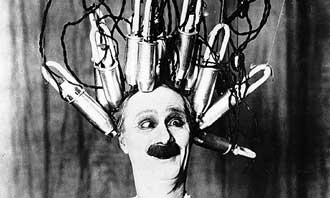 Boffins from the University of Washington have emerged from their smoke filled labs with a new communication system that uses radio frequency (RF) signals as a power source.
Boffins from the University of Washington have emerged from their smoke filled labs with a new communication system that uses radio frequency (RF) signals as a power source.
It means that you can also use existing Wi-Fi infrastructure to provide Internet connectivity to these devices.
Dubbed Wi-Fi backscatter, this technology is the first that can connect battery-free devices to Wi-Fi networks.
It solves a problem that inventors were having with the unternet of thongs. The devices have to be small, and that means losing or shinking the battery. It also means that people will be spending more time charging their shiny toys than they do using them.
Shyam Gollakota, a UW assistant professor of computer science and engineering, said that using this system it is possible to enable Wi-Fi connectivity for devices while consuming orders of magnitude less power than what Wi-Fi typically requires.
The researchers will publish their results at the Association for Computing Machinery’s Special Interest Group on Data Communication‘s annual conference this month in Chicago. The team also plans to start a company based on the technology.
There had been some work done before which showed how low-powered devices such as temperature sensors or wearable technology could run without batteries or cords by harnessing energy from existing radio, TV and wireless signals in the air. This work takes that a step further by connecting each individual device to the Internet, which previously was not possible.
The problem was that low-power Wi-Fi consumes three to four orders of magnitude more power than can be harvested in these wireless signals.
What the researchers developed was an ultra-low power tag prototype with an antenna and circuitry that can communicate with Wi-Fi-enabled laptops or smartphones while consuming negligible power.
The tags looking for Wi-Fi signals moving between the router and a laptop or smartphone. They encode data by either reflecting or not reflecting the Wi-Fi router’s signals, and slightly changing the wireless signal. Wi-Fi-enabled devices detect these changes and receive data from the tag.
The UW’s Wi-Fi backscatter tag has communicated with a Wi-Fi device at rates of 1 kilobit per second with about 2 meters between the devices. They want to extend the range to about 20 meters and have patents filed on it all.





